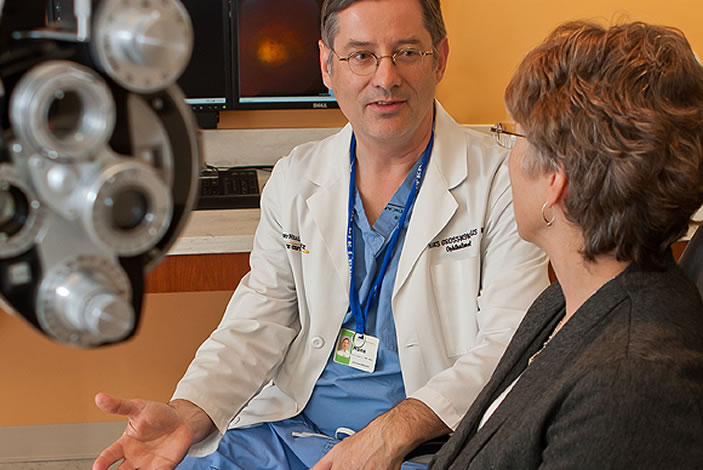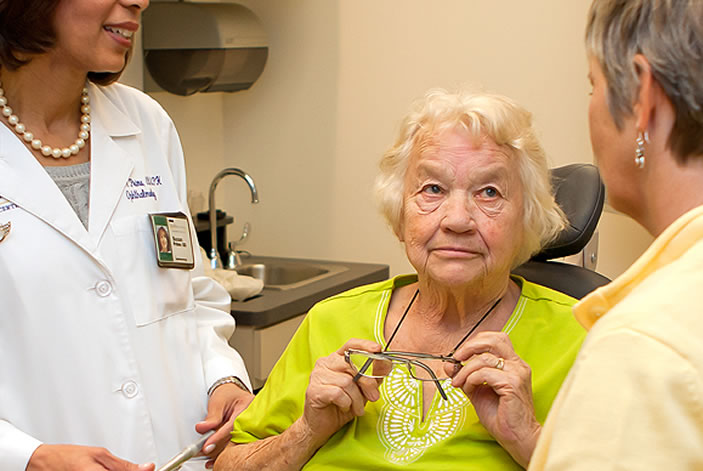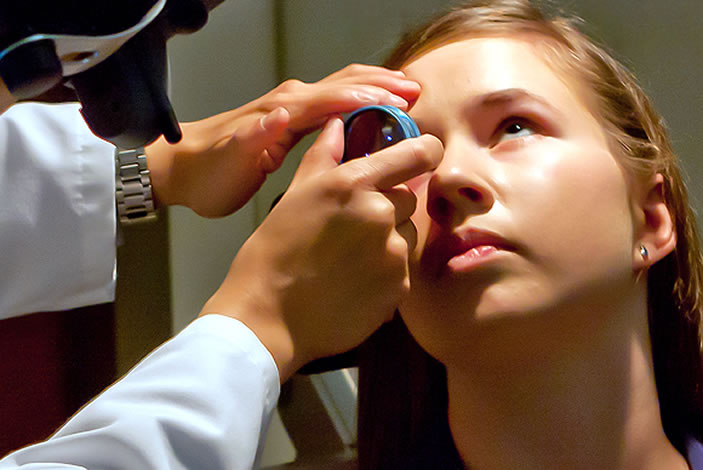For anyone who has undergone a medical eye exam, the phrase "eye to eye" probably brings up the memory of leaning into the forehead-and-chin rest while the ophthalmologist's eyes, inches away but unseen, peer from the other side of the slit lamp.
At the Emory Eye Center, "eye to eye" captures much more: Emory physicians' ethic of direct, thorough, and compassionate communication with patients and families. The mutual sharing between patient and doctor — "Here's what’s been happening with my vision." / "Here's what your examination tells me, and these are the options we should consider." The ongoing discussion until all parties "see eye to eye," agreeing — as a team — on a plan of treatment.
What's more, at Emory Eye Center this short phrase can multiply indefinitely — eye to eye to eye to eye to eye, and so on — reflecting the many other eyes at work within the center's examining rooms, operating rooms, research laboratories, instructional settings, clinical trials, satellite locations, and, in fact, throughout Emory University School of Medicine.
All of these eyes focus closely on questions related to eye patients’ problems. Through professional education and extensive experience, they are trained to see analytically; to look for the tiniest clues; to consider every possibility. Who benefits? One patient at a time – and an infinite number of patients in the future.
In the latest issue of Emory Eye Magazine, meet patients and their families who received this "eye to eye" treatment:
- The Simpson Family
Jeff and Angel Simpson recently tried to figure out how many trips they’ve made from their North Georgia home to Emory Eye Center since their first visit, to seek care for their children, who have inherited retinoblastoma (RB). Their best guess: between 75 and 100. - Jackie Carswell
After being diagnosed with age-related macular degeneration in her mid-70s, Carswell learned she was eligible for a procedure in which one of her eyes would be implanted with an implantable miniature telescope. - Peggy Moloney
Maloney sough expert care at Emory after a routine eye examination using a new machine for taking retinal photos showed a growth sitting on her eye. She was treated for ocular melanoma. - Lori Smith
As a young teen Lori assumed that the floating spots and black specks occasionally dotting her vision were commonplace, until she said something to her mother, was seen by a doctor and learned she had uveitis. That diagnosis eventually led her and her family to Emory.




